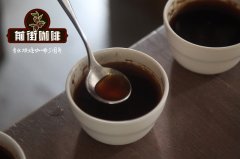What are the chemicals in raw coffee beans? what are the main ingredients of coffee?
Green coffee beans are hard, green seeds, 50% of which are different types of carbohydrates, and the other 50% are composed of water, proteins, lipids, acids, and various biological bases. Coffee roasters don't need to know the many chemicals in green beans to make good coffee, but knowing them will help them judge the quality of coffee beans and greatly improve roasting techniques.
chemical structure
The structure of green coffee beans is a three-dimensional cellulose compound, or a polysaccharide, with each proton containing about a million individual cells. Cellulose in the matrix of green coffee beans interconnects hundreds of chemicals, which are converted into fats and water-soluble substances through the roasting process, thus determining the different flavors in brewed coffee. The cellulose structure in green coffee beans contributes half of its weight, but it doesn't contribute much to the flavor of roasted coffee, but it does capture volatile compounds that affect coffee aroma and add viscosity to brewed coffee, which is to increase the body we perceive through touch.
What are the main components of coffee?
Caffeine: has a particularly strong bitter taste and stimulates the central nervous system, heart and respiratory system. Moderate caffeine can also reduce muscle fatigue and promote digestive secretion. Because it promotes kidney function, it has a diuretic effect and helps the body expel excess sodium ions from the body. Too much caffeine can lead to caffeine poisoning.
Tannin: Boiled tannins break down into pyrochloric acid, so coffee brewed too long will taste worse.
Fats: The most important of these are acidic fats and volatile fats.
Acidic fat: That is, fat contains acid, its strength will vary depending on the type of coffee.
Volatile fat: the main source of coffee aroma, it is a kind of will emit about forty aromatic substances.
Protein: A major source of calories, but not a high percentage. Coffee powder protein in brewing coffee, most will not dissolve out, so intake is limited.
Sugar: Coffee beans contain about 8% sugar, most of which will be converted into caramel after roasting, making coffee brown and sweet with tannins.
Fiber: The fibers of the raw beans are carbonized after roasting and combine with caramel to form the hue of coffee.
Minerals: contains a small amount of lime, iron, phosphorus, sodium carbonate and so on.

Important Notice :
前街咖啡 FrontStreet Coffee has moved to new addredd:
FrontStreet Coffee Address: 315,Donghua East Road,GuangZhou
Tel:020 38364473
- Prev

The ideal growing environment for coffee trees the common sense of coffee tree planting coffee tree varieties and regional factors
Professional coffee knowledge exchange more coffee bean information Please pay attention to coffee workshop (Wechat official account cafe_style) Coffee trees grow in the tropics between Tropic of Cancer and Tropic of Cancer and near the equator, also known as the world coffee growth belt, caffeine varieties and regional factors, there are also great differences in appearance. Evergreen leaves from yellowish green to dark green or
- Next

The historical origin of hanging-ear coffee the difference between instant coffee and hanging-ear coffee
Hanging ear bag is a patented design developed by the Japanese. The filter bag is used to store coffee, while there are small cardboard on both sides, like two small ears, so it is called hanging ear coffee ~ and these two small ears are used to hang the coffee bag at the mouth of the cup to brew. After brewing, the ear bag can be thrown away, and it is convenient to drink freshly ground coffee like hand-brewed coffee. The history of hanging-ear coffee
Related
- Beginners will see the "Coffee pull flower" guide!
- What is the difference between ice blog purified milk and ordinary milk coffee?
- Why is the Philippines the largest producer of crops in Liberia?
- For coffee extraction, should the fine powder be retained?
- How does extracted espresso fill pressed powder? How much strength does it take to press the powder?
- How to make jasmine cold extract coffee? Is the jasmine + latte good?
- Will this little toy really make the coffee taste better? How does Lily Drip affect coffee extraction?
- Will the action of slapping the filter cup also affect coffee extraction?
- What's the difference between powder-to-water ratio and powder-to-liquid ratio?
- What is the Ethiopian local species? What does it have to do with Heirloom native species?

